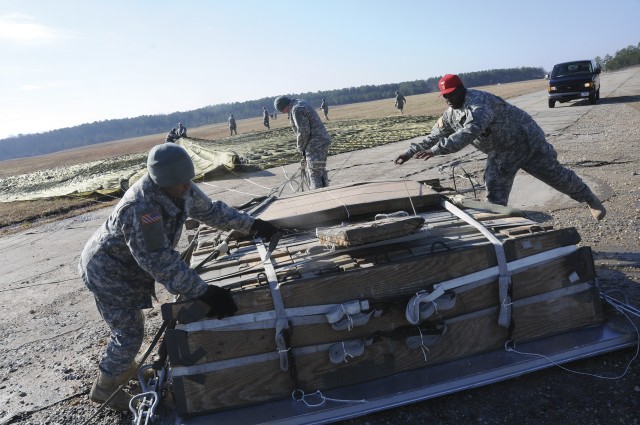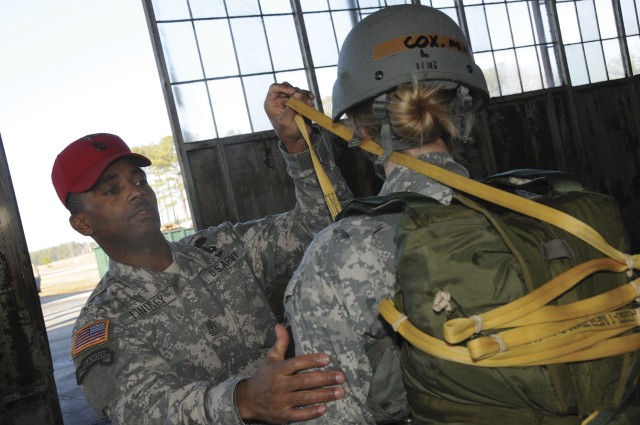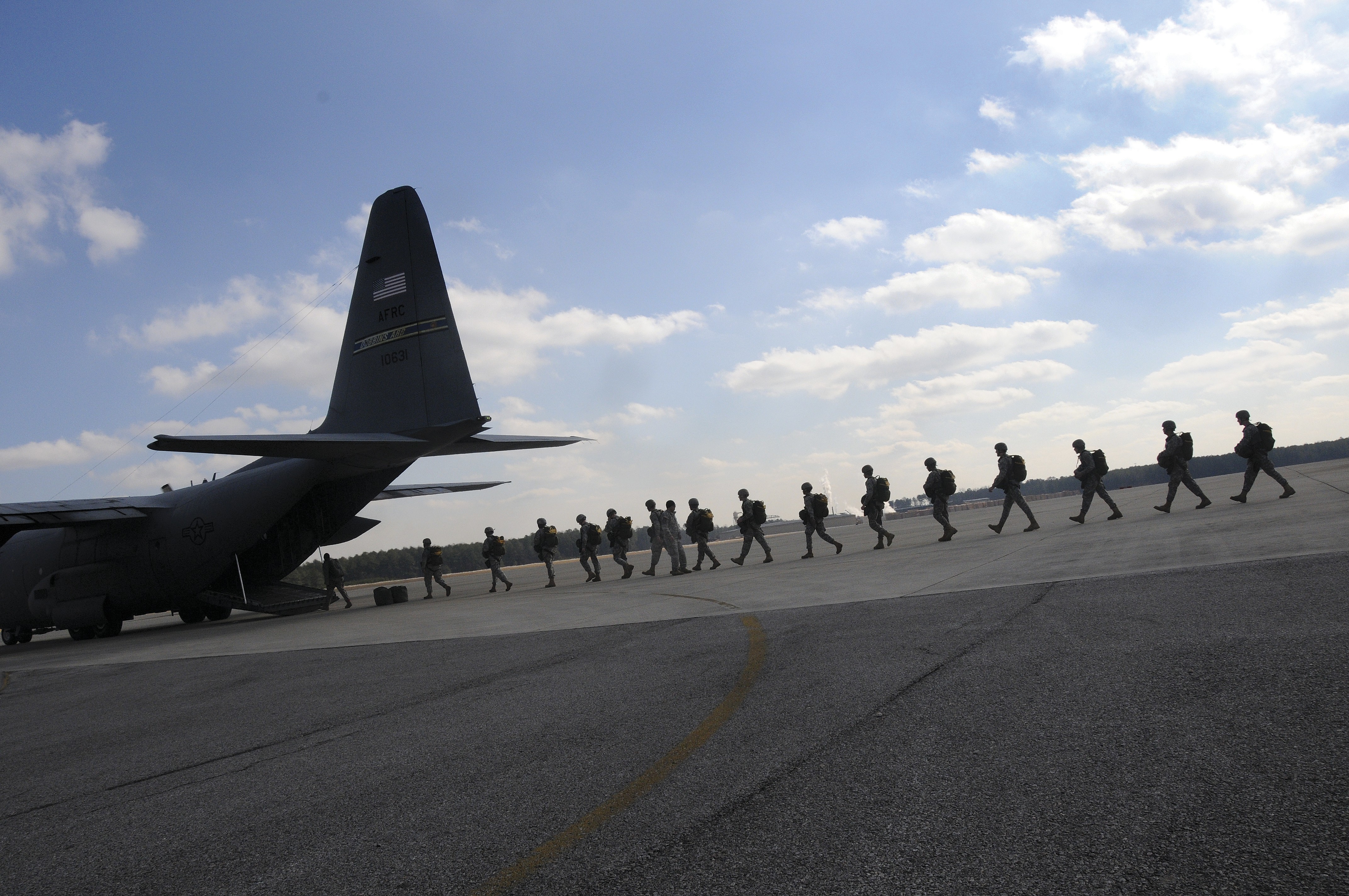Fort Lee, Va. (Feb. 5, 2009) -- It's a few minutes before 9 a.m., below freezing, and most of the 94 Soldiers and Marines gathered in an aircraft hangar seem to project a strange look of anticipation and burden.
In contrast, their overseers - the 10 or so instructors - are visible, watchful and vocal, barking orders and making their presence felt.
That scene on Jan. 29 is typical for any of the three Thursdays a month that students and instructors from the Quartermaster Center and School's rigger course gather at Fort Pickett's airfield to conduct airborne training.
Parachute rigger course students undergo 16 weeks of training in which they will jump from a plane flying at 1,300 feet and learn, among other things, to pack parachutes and rig equipment for airdrops. The look of burden on their faces is justified.
"Every student jumping today has packed their own parachute," said Army Staff Sgt. Steven Howard, pack branch instructor at the QMC&S's Aerial Delivery and Field Services Department.A,A "They were supervised by instructors to ensure they were packed safely."
Howard is rather simplistic and unemotional in his explanation of a task that is very dangerous, to say the least, and at the very heart of what riggers do.A,A It's much more complicated for the students, and he understands that.
"It's pretty quiet," he said of their mood in the hangar. "They're thinking of what's going on.A,A They really don't know what to expect because it is their own parachute, but that's why the instructors are here.A,A We instill confidence in them."
Not all the students in the hangar will need a shot of confidence.A,A A small percentage of students, some in their last week of the course, will not be jumping and are in the airdrop phase of the course.A,A They are in a much lighter mood, but Howard said the rigging equipment is just as critical as packing one's own parachute.
"The biggest thing is that, if you don't rig it correctly, and it gets stuck in the aircraft, you can actually bring that aircraft down," he said.
Subsequently, any problem concerning incorrect rigging may jeopardize the lives of military members for whom the supplies are intended, added Howard.
"We keep drilling them, letting them know that people's lives are in their hands," he said. "You figure, if a Soldier is out there in the sandbox for two or three weeks without adequate food or water, they might die."
After about two hours of checking personnel equipment and ensuring that students are prepared for their jump, the instructors direct some students to the tarmac where they will wait for the plane. It's still cold, but a light veil of haze is lifted, revealing a vibrant blue sky and puffy clouds. A,A
In the meantime, the Air Force C-130 aircraft has dropped the platforms the students in the airdrop phase have rigged.A,A An instructor drives them out to the drop locations to recover the equipment and de-rig it. When the students approach the bundles, everything is still intact.A,A Nothing is loose, nothing is lost.A,A
It was a successful mission and an occasion worthy of back-patting, said Army Pvt. Saztec Smith, a student who witnessed the bundles fall from the plane.
"I felt excited," he said. "It was good to know that the stuff I helped to rig up actually came out (of the plane) and worked the way it was supposed to."
Army Sgt. 1st Class Donnie James, noncommissioned officer in charge, ADFSD aerial delivery branch, said the airdrop was successful.
"My team did a real good job," he said.A,A "Anything that hits the ground safely is a good job for me."
Shortly after the airdrops, the students scheduled to jump begin organizing to board the planes.A,A Three separate lifts take the students up and out several miles and back to the drop zone.A,A Seven or eight jumpers float from the plane with each flyby. A,A
The jumpers land within a radius of about one mile, with some landing close to the tarmac. Expressions of 'Oohs' and 'Ahs' are heard from the onlookers, who know their time is coming up.
After all the students have jumped, the mood is much lighter.A,A The students have lunch, laugh and talk about the events beforehand. They don't look like the same burdened students who were about to embark on the mission, and Howard has a look of satisfaction on his face.
"The students performed well," he said.A,A "They listened to all the commands.A,A No problems." That's fairly typical for a Thursday at Fort Pickett.








Social Sharing